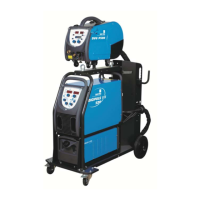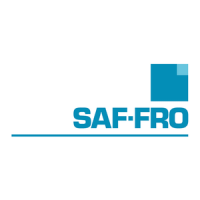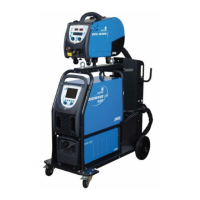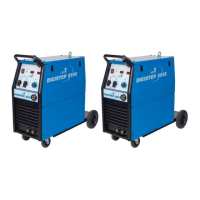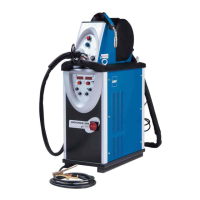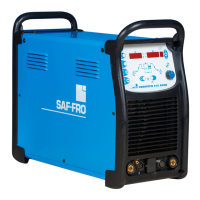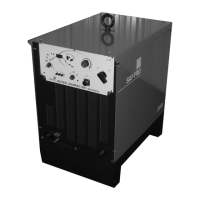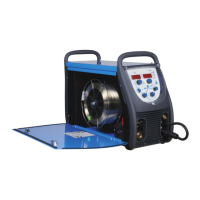
Do you have a question about the Saf-Fro DIGISTEEL III 320C and is the answer not in the manual?
| Model | DIGISTEEL III 320C |
|---|---|
| Category | Welding System |
| Brand | Saf-Fro |
| Welding Process | MIG/MAG |
| Input Voltage | 3 x 400V |
| Input Frequency | 50/60 Hz |
| Efficiency | 85% |
| Protection Class | IP23 |
Describes the capabilities of the welding set, including MIG-MAG welding modes and wire types.
Lists the main components of the welding set (power source, trolleys, cooler).
Identifies the main parts of the power source with numbered labels.
Explains how to connect the welding set to the main power supply, including crucial safety warnings.
Advises on selecting appropriate wire and gas for welding, including a polarity warning.
Detailed steps for setting up and feeding wire through the wire feeder and torch.
Discusses the importance of wear parts for the wire driver and their replacement.
Explains how to connect the MIG welding torch to the wire feeder.
Describes how to connect the gas cylinder and ensure proper gas flow.
Instructions on how to turn the welding machine on and what to expect at startup.
Details the functions of each button, display, and encoder on the front panel.
Step-by-step guide to calibrate the power source for quality welding.
Covers Synergic, Manual, and Setup modes for operating the welding machine.
Details how to create, store, and modify welding programs.
Explains how to chain multiple programs using the trigger.
Describes the optional cooler unit system.
Details the functions of the simple remote control.
Describes the trolley for easy movement of the power source.
Lists different models of standard torches.
Lists watercooled torches available for use with the watercooler option.
Lists potentiometertorches and their functions for adjusting wire speed and arc length.
General maintenance checks and warnings, including frequency of checks and safety precautions.
Maintenance advice for wire feeder rollers and guides, including wear and clogging.
Maintenance of the welding torch, including checking connections and cleaning spatter.
Addresses specific error messages, trigger faults, no welding power, welding quality, and other problems.
Describes different welding processes like "soft" short arc and "dynamic" short arc.
Explains the pulsed MIG process and its advantages for welding.
Details the 2-step welding cycle, including hot start and down-slope functions.
Details the 4-step welding cycle and its operational phases.
Describes the spot welding cycle and its parameters, disabling adjustments.
Explains the sequencer cycle, its validation parameters, and availability.
Details the fine-setting function for optimizing droplet detachment and arc characteristics.
Lists gases and their corresponding codes for welding operations.
Lists wire types and their designations for welding operations.
